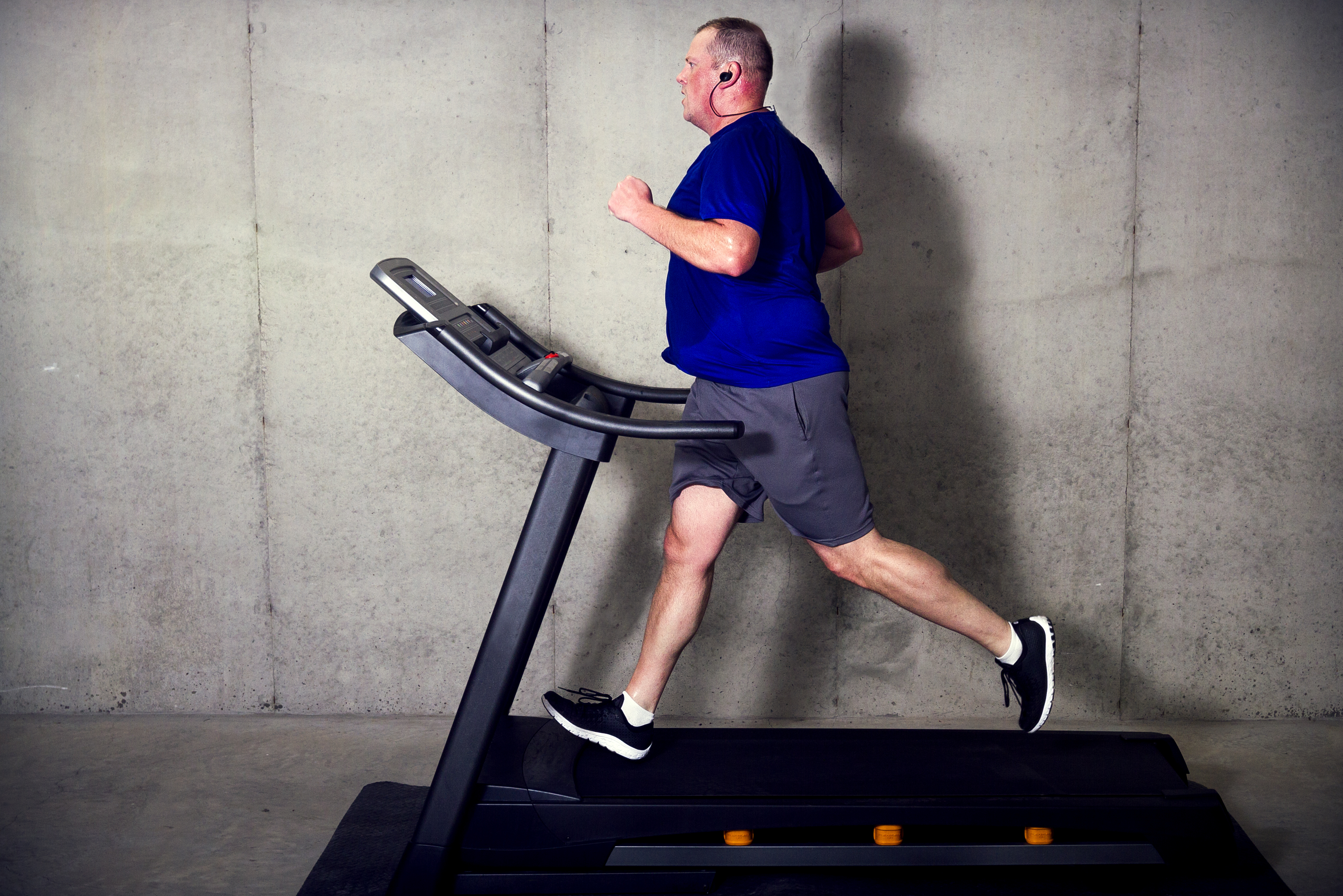What's the best exercise for weight loss?
Defining the best exercise for weight loss can be a complex topic, but we've looked into the research and enlisted expert help to make it clearer for you

The best exercise for weight loss? We wish there was a simple answer to this question! Just one class to sign up for or one set of equipment to buy, and all your weight loss goals will soon be ticked off. Alas, it’s never so simple. While some forms of exercise may certainly be more intense, get your heart pounding faster and your lungs working harder, there’s also a lot more to consider. Not least, that while we can look at what the science says, the reality is that the best exercise for weight loss is probably the one you enjoy and will therefore stick to.
And all this is even before we even consider nutrition. After all, your diet is likely to play a far greater role in your health and weight loss (if that’s your goal) than exercise, though exercise can certainly help. Generally speaking, cardiovascular exercise is more likely to burn a higher number of calories, so you can take a look at some of the best cardio equipment or exercise machines for weight loss.
And of course you might also want to track your progress towards your goal, whether by using a top fitness tracker or one of the best smart scales, which come complete with high-tech insights into body composition.
So while the answer to the question “what’s the best exercise for weight loss” may be “it depends”, we can certainly help guide you to the best exercise for you, with expert tips not only from the reams of research into this subject but also with the help of Luke Hughes, co-founder of OriGym.

Luke is the CEO and Co-Founder of OriGym. Holding a first-class degree in Sport and Exercise and an MSc in Sport and Nutrition, he is also qualified as a Level 4 Personal Trainer with various specialist credentials covering the entire spectrum of health, fitness and business.
How exercise contributes to weight loss
The simple reality is that for most people, exercise can help lead to weight loss because it increases the number of calories your body is using.
“Doing high levels of physical activity can help to put you in a calorie deficit,” explains Hughes, “meaning you're consuming fewer calories than you burn, which will result in weight loss”.
So if you combine reducing your calorific intake with increasing your levels of physical activity, then you will go into calorie deficit. It’s important of course not to take this to extremes, as your body still needs fuel, but if you move more, and eat a little less, then you will lose weight.

Research in the last few decades has increasingly shown that it really is diet that plays a key role in weight loss, more so than exercise - though it’s important to remember that exercise also brings many other health benefits beyond weight loss so it’s still a really important part of an overall healthy lifestyle.
A systematic review of studies, published in the Journal of the American Dietetic Association, actually suggested that using exercise alone for weight reduction was less effective, with subjects following this single approach experiencing minimal weight loss. And the American College of Sports Medicine states that while the “recommended levels of physical activity may help produce weight loss.. up to 60 min/day may be required when relying on exercise alone for weight loss.”
The best exercises for burning calories
However, despite the proviso that diet is crucial, there are certainly some forms of exercise that burn more calories in a given amount of time than others. The science is pretty clear that cardio exercise, raising the heart rate and making the body work harder, burns more calories than resistance training. A 2012 study in the Journal of Strength and Conditioning Research found that running on a treadmill burns 25-39% more calories than doing kettlebell exercises at the same level of exertion. That’s not, of course, to say that kettlebell exercises and resistance training isn’t also a great part of an exercise routine.
Another particularly good exercise for burning calories is jumping rope, which in a person of 170lbs would burn around 460 calories in half an hour, according to estimates from The American Council on Exercise. A similar workout of half an hour on one of the best rowing machines would burn an estimated 404 calories. The best way to monitor exactly how hard you are working and, if you want to track them, how many calories you are expending, is to use a fitness tracker that measures your heart rate.

But as mentioned, resistance training is still really important and can also be a really good part of a weight loss driven exercise regime. “A regular workout routine featuring weightlifting and resistance training is one of the key groups of exercises to burn the most calories,” says Hughes.
“It’s a common misconception that strength training should be purely reserved for those looking to bulk build muscle, but it’s also very effective for burning calories. Muscles are a metabolically active, fat-burning tissue.
“Simply put, this means muscles require the use of calories, even when at rest. This same tissue also plays a role in increasing the number of fat-burning enzymes in your body. Therefore, the more muscle you have, the more calories you’ll naturally burn.”
What is FatMax training and can it help you lose weight?
Some of the language and vocabulary around exercise and weight loss can be complicated and confusing. For example, one type of training that has become popular in recent years is known as FatMax.
FatMax has been defined as the amount of fat someone can 'burn' in an hour. More specifically, FatMax is the intensity of exercise at which an individual’s fat oxidation — measured in grams per minute — is at its highest.
Theoretically, if you increase the intensity of your exercise, you will at some point reach the maximum level of fat oxidation - the so-called FatMax. And that moment occurs generally at a moderate rather than all-out effort. However, everyone’s FatMax is highly individual, with a lab test really the best way to find out your specific ‘FatMax’.
This of course is unlikely to be accessible for the majority of people. The reality for most people is that mixing different kinds of exercise intensity is the best way to increase fitness while minimising risk of injury. If you do some exercise at low intensity, some at medium and a small amount at high intensity, your fitness will increase and you will gradually build muscle.

There are many other terms used in the fitness industry that can make the subject over complicated, and if it all seems a bit overwhelming then don't worry - it's better not to get overly caught up in it if your goal is simply weight loss. The main thing to remember is that building up gradually to longer exercise efforts will certainly help both fitness and calorific deficit.
“Increasing your endurance both in terms of cardiovascular and muscular endurance is important for losing weight as you will be able to train longer, meaning you'll use more energy over a longer period of time and burn more calories” explains Hughes.
General tips when exercising for weight loss
So as we have established, when it comes to determining the best exercise for weight loss, there is no clear cut answer. The better approach is to focus on building in small changes, and healthy lifestyle interventions that will help aid general weight loss. And of course these will also benefit your health in a number of other, positive ways.
“Combining exercise with a healthy diet is the ideal way to lose weight,” Hughes explains, “rather than depending on calorie restriction alone. However, when engaging in intense exercise, you should ensure you're eating enough calories to keep your energy levels up.
“You should also focus on the intensity of the exercise you're doing, rather than the number of calories you're burning. Also, set a consistent time to work out as you're more likely to stick to this if you.
“Finally, by focusing on exercises you enjoy, you'll be less concerned with how many calories you're actually burning during the activity.”
This article is not meant to offer medical advice and readers should consult their doctor or healthcare professional before adopting any diet or treatment.
Sign up for the Live Science daily newsletter now
Get the world’s most fascinating discoveries delivered straight to your inbox.
A former commissioning editor at men’s lifestyle site FashionBeans, and lifestyle writer at The Telegraph, Richard takes pride in his ability to craft engaging reads on pretty much any topic imaginable. He is currently editor of inForm, the in-house magazine of supplements brand Form Nutrition, and specialises in easy-to-follow guides within the health and fitness space. Along with these roles, Richard also has bylines with The Evening Standard and The Independent.











